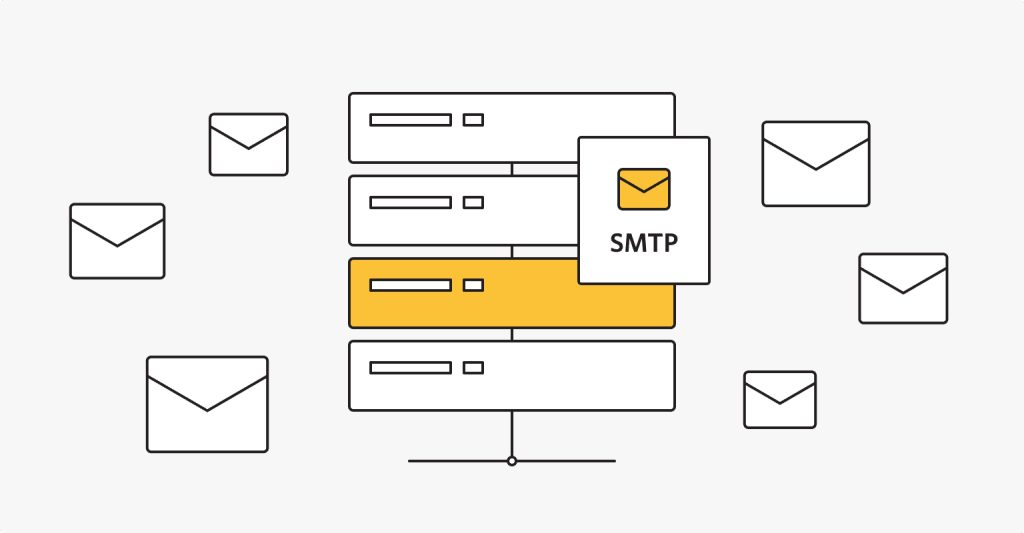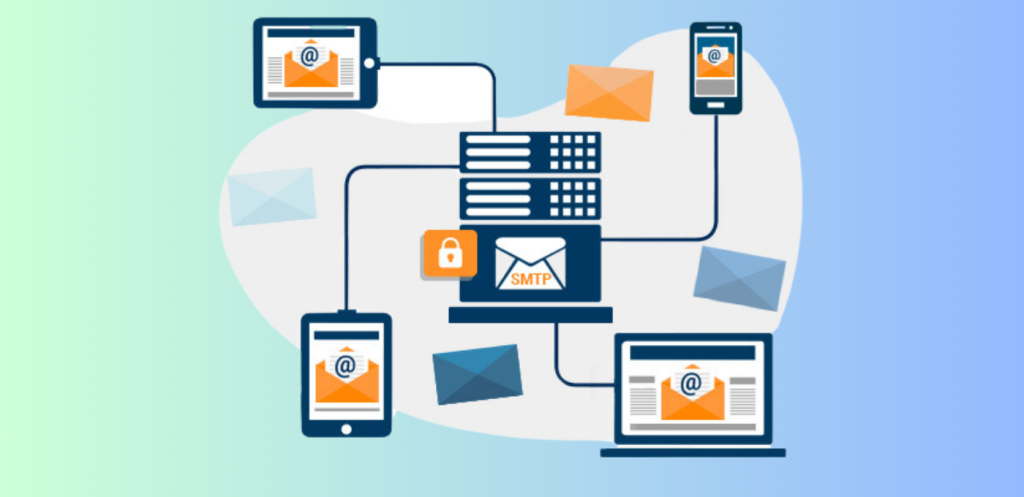Have you ever wondered what happens when you click “Send” on an email? Behind that simple action lies the power of SMTP (Simple Mail Transfer Protocol), the driving force that makes email communication possible. In this blog, we’ll take a deep dive into how SMTP servers work, what they do, and why they’re essential for every email you send. From enhancing deliverability to strengthening security, understanding SMTP can make a world of difference in how your emails perform
Unpacking SMTP: The Email Highway
SMTP, or Simple Mail Transfer Protocol, acts as the backbone of email communication. Think of SMTP as the postal service of the internet, directing emails to the correct inboxes efficiently. As a protocol, SMTP not only determines the route for emails but also checks their legitimacy, making it essential for email deliverability and spam prevention.
While SMTP handles the transmission of emails from your server to the recipient’s inbox, it does so by adhering to strict rules that enhance the reliability and security of each message. The protocol functions on the Transmission Control Protocol (TCP) and uses IP addresses, ensuring messages arrive at their intended destination through a secure and monitored process.

How SMTP Servers Work
An SMTP server is designed solely for handling outgoing emails. Without it, your email would be stuck in limbo. Here’s what happens when you send an email:
- Connection: Your email client connects to an SMTP server, such as smtp.gmail.com or smtp.sendgrid.com.
- Authentication: The server verifies your login credentials to ensure you’re authorized to send emails from your domain.
- Relaying: After verification, the SMTP server finds the recipient’s server and relays your message, ensuring it reaches the recipient’s inbox.
SMTP is essential because it facilitates seamless communication between different mail servers, allowing cross-platform email exchanges.

SMTP Servers vs. Regular Servers
Although SMTP servers share similarities with regular servers, their purpose is highly specialized. Regular servers manage a variety of data types, but SMTP servers are solely dedicated to email transmission. This specialized functionality ensures high reliability for email delivery across various platforms, from Gmail to Outlook.
The Value of SMTP Authentication
SMTP authentication, or SMTP AUTH, is a vital security measure that requires users to log in before sending an email. This added step minimizes spam by confirming that emails originate from verified accounts, thus protecting your inbox and enhancing email deliverability.

Key SMTP Features and Enhancements
- Encryption: SMTP servers can use SSL or TLS for encryption, enhancing email security.
- Deliverability: SMTP ensures emails reach the intended inbox by following IP routing protocols.
- Authentication: SMTP AUTH prevents unauthorized access and spam.
- Relay: SMTP relay improves deliverability by routing emails through trusted third-party servers.
Common SMTP Errors and How to Resolve Them
- 550 Error: Indicates the recipient’s mailbox is unavailable.
- 554 Error: Occurs when the server flags your message as spam.
- 421 Error: Temporarily blocks emails due to a server issue.
Understanding and troubleshooting these errors can ensure smoother email operations.

SMTP and Modern Email Innovations
In today’s email infrastructure, SMTP integrates with advanced protocols like DMARC and BIMI:
- DMARC: Enhances email security by verifying sender authenticity.
- BIMI: Adds a branded logo to your emails, boosting recognition and trust.
- AI Integration: Optimizes SMTP efficiency by predicting issues and selecting the best email routes.
FAQs About SMTP
What’s the difference between SMTP and IMAP/POP3? SMTP handles sending emails, while IMAP and POP3 manage receiving them.
Can you use SMTP without an email service provider? Technically, yes, but using an established provider ensures better deliverability and security.
What’s an SMTP relay? SMTP relay routes emails through trusted servers, improving deliverability and providing insights into performance.

SMTP serves as the digital bridge that ensures your emails reach their destinations securely and efficiently. By understanding and utilizing the power of SMTP, you can enhance the deliverability, security, and reliability of your email campaigns. Whether you’re a marketer or a business owner, optimizing your email delivery process with the right SMTP server will help you connect with your audience more effectively. Embrace the potential of SMTP and take your email communication to the next level.